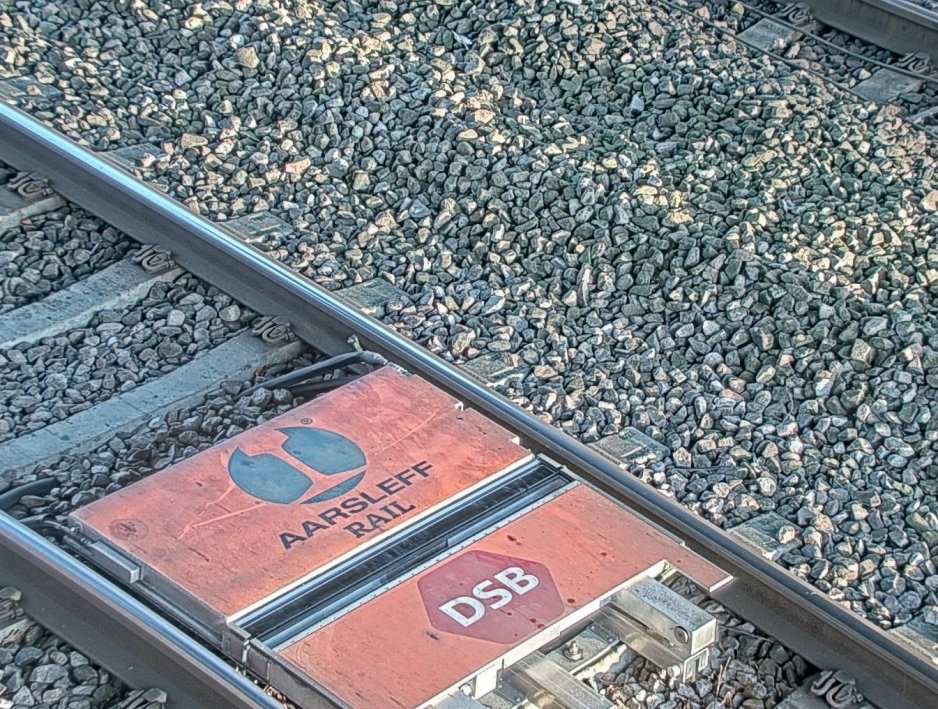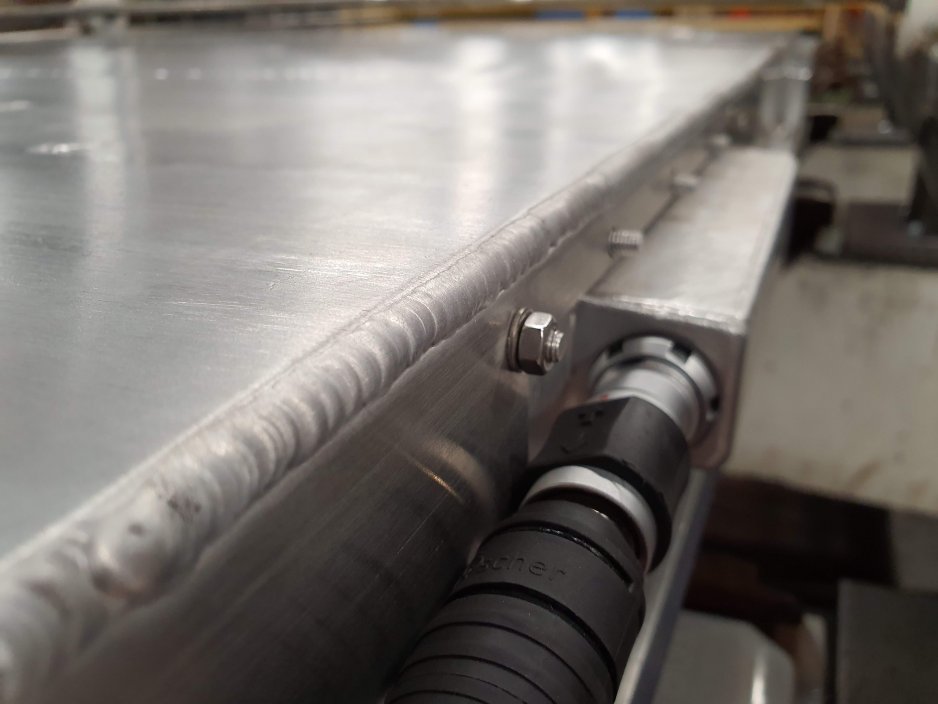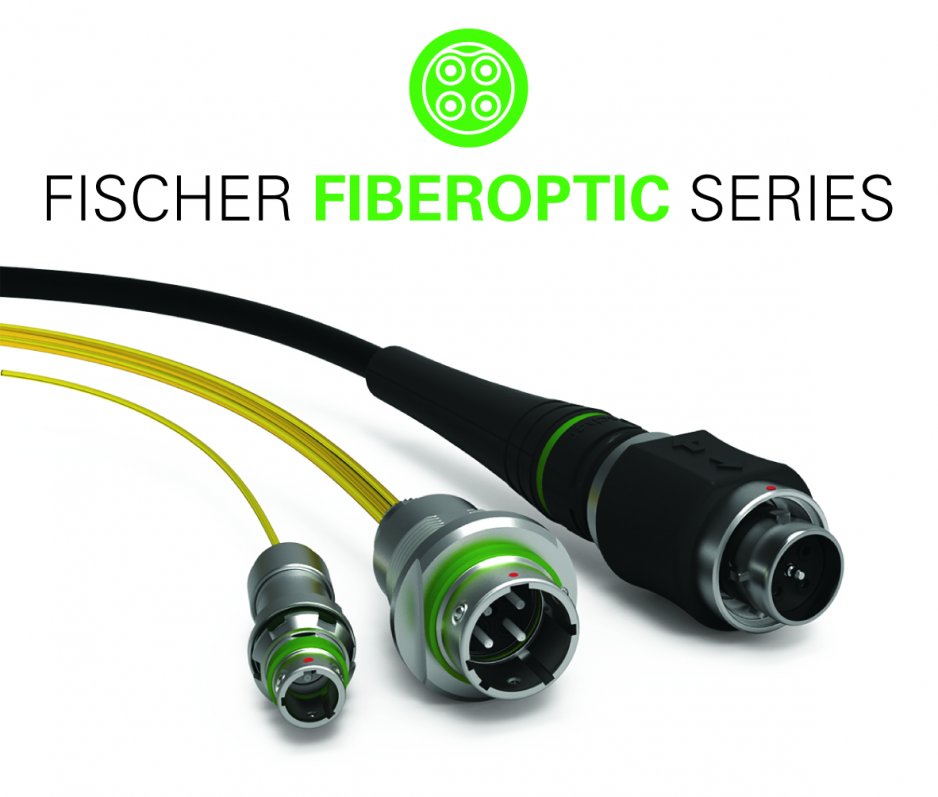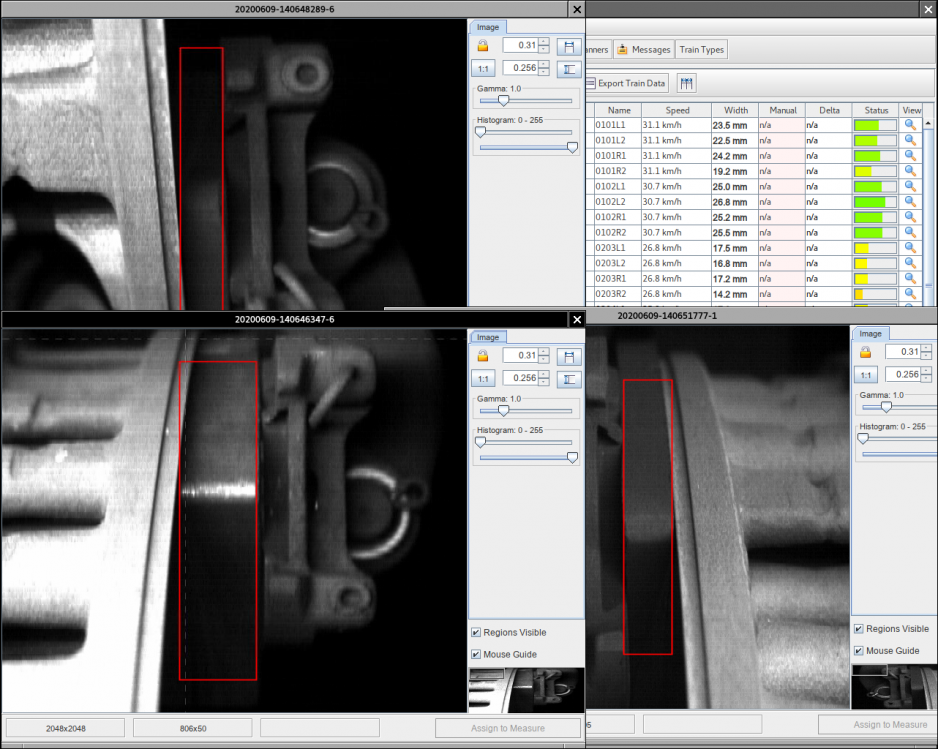Next stop, predictive maintenance: ITTH
The Project Overview
To enable brake shoes to be optically inspected on an automatic basis, Danish State Railways have installed high-performance scanning systems made by the German company ITTH GmbH & Co. KG in the track bed. Thanks to high-performance camera systems, these take photos of the brake shoes. These are subsequently transmitted to the computer system, where their condition is determined automatically, with the aid of hybrid connectors from the Fischer FiberOptic Series. The speed of the data transmission is 10 Gbit/s. The Fischer FiberOptic Series connectors have two optical channels for data transmission and two electrical contacts. This enables data transmission at high speeds. In addition, it is important that the connectors used not only deliver a high transmission rate, but are also resistant to external influences such as dust, rain, snow, oil and gasoline. The Fischer FiberOptic Series connectors have IP68 and IP67 sealing and thus meet the requirements for use in the track bed.
To enable brake shoes to be optically inspected on an automatic basis, Danish State Railways have installed high-performance scanning systems made by the German company ITTH GmbH & Co. KG in the track bed. Thanks to high-performance camera systems, these take photos of the brake shoes. These are subsequently transmitted to the computer system, where their condition is determined automatically, with the aid of hybrid connectors from the Fischer FiberOptic Series. The speed of the data transmission is 10 Gbit/s. The Fischer FiberOptic Series connectors have two optical channels for data transmission and two electrical contacts. This enables data transmission at high speeds. In addition, it is important that the connectors used not only deliver a high transmission rate, but are also resistant to external influences such as dust, rain, snow, oil and gasoline. The Fischer FiberOptic Series connectors have IP68 and IP67 sealing and thus meet the requirements for use in the track bed.
To enable brake shoes to be optically inspected on an automatic basis, Danish State Railways have installed high-performance scanning systems made by the German company ITTH GmbH & Co. KG in the track bed. Thanks to high-performance camera systems, these take photos of the brake shoes. These are subsequently transmitted to the computer system, where their condition is determined automatically, with the aid of hybrid connectors from the Fischer FiberOptic Series. The speed of the data transmission is 10 Gbit/s. The Fischer FiberOptic Series connectors have two optical channels for data transmission and two electrical contacts. This enables data transmission at high speeds. In addition, it is important that the connectors used not only deliver a high transmission rate, but are also resistant to external influences such as dust, rain, snow, oil and gasoline. The Fischer FiberOptic Series connectors have IP68 and IP67 sealing and thus meet the requirements for use in the track bed.
Key challenges
- High speed of data transmission
- Resistant to external influences such as water, oil and gasoline
- Easy to mate for easy, quick assembly and disassembly of the system
Main technical requirements
- Robust
- Reliable
- Durable
- High-speed data transmission
About “ITTH GmbH & Co. KG “
ITTH GmbH & Co. KG relies on hybrid connectors from the Fischer FiberOptic Series for data transmission in the high-performance scanning systems used for the automatic optical inspection of brake shoes on Danish State Railways. Thanks to high-performance camera systems, the scanning systems installed in the track bed at the stations in Odense and Kolding take photos of the brake shoes as the trains pass over them. Subsequent transmission to the computer system takes place at a speed of 10 Gbit/s via hybrid connectors from the Fischer FiberOptic Series. Since the system is located in the track bed, the connectors need to be suitably robust and resistant to external influences. The Fischer connectors have IP68 and IP67 sealings. They are resistant to external influences such as dust, rain and snow. Even oil and gasoline, that they may also come into contact with in the track bed, cannot harm the connectors.
ITTH GmbH & Co. KG relies on hybrid connectors from the Fischer FiberOptic Series for data transmission in the high-performance scanning systems used for the automatic optical inspection of brake shoes on Danish State Railways. Thanks to high-performance camera systems, the scanning systems installed in the track bed at the stations in Odense and Kolding take photos of the brake shoes as the trains pass over them. Subsequent transmission to the computer system takes place at a speed of 10 Gbit/s via hybrid connectors from the Fischer FiberOptic Series. Since the system is located in the track bed, the connectors need to be suitably robust and resistant to external influences. The Fischer connectors have IP68 and IP67 sealings. They are resistant to external influences such as dust, rain and snow. Even oil and gasoline, that they may also come into contact with in the track bed, cannot harm the connectors.
ITTH GmbH & Co. KG relies on hybrid connectors from the Fischer FiberOptic Series for data transmission in the high-performance scanning systems used for the automatic optical inspection of brake shoes on Danish State Railways. Thanks to high-performance camera systems, the scanning systems installed in the track bed at the stations in Odense and Kolding take photos of the brake shoes as the trains pass over them. Subsequent transmission to the computer system takes place at a speed of 10 Gbit/s via hybrid connectors from the Fischer FiberOptic Series. Since the system is located in the track bed, the connectors need to be suitably robust and resistant to external influences. The Fischer connectors have IP68 and IP67 sealings. They are resistant to external influences such as dust, rain and snow. Even oil and gasoline, that they may also come into contact with in the track bed, cannot harm the connectors.
Trains’ brake systems are subjected to high loads. This makes it all the more important to keep a constant eye on the condition of the systems. Impending damage from wear must be fixed before it becomes a safety risk. As a rule, this is done in train depots and workshops by appropriate staff. However, this increases downtimes and the maintenance intervals are usually shorter than necessary. Danish State Railways (DSB) therefore decided to commission a system that automatically monitors the condition of the brake shoes – during ongoing operations. For this purpose, high-performance scanning systems from the German company ITTH GmbH & Co. KG were installed in the track bed to enable automatic optical inspection.
Trains’ brake systems are subjected to high loads. This makes it all the more important to keep a constant eye on the condition of the systems. Impending damage from wear must be fixed before it becomes a safety risk. As a rule, this is done in train depots and workshops by appropriate staff. However, this increases downtimes and the maintenance intervals are usually shorter than necessary. Danish State Railways (DSB) therefore decided to commission a system that automatically monitors the condition of the brake shoes – during ongoing operations. For this purpose, high-performance scanning systems from the German company ITTH GmbH & Co. KG were installed in the track bed to enable automatic optical inspection.
Trains’ brake systems are subjected to high loads. This makes it all the more important to keep a constant eye on the condition of the systems. Impending damage from wear must be fixed before it becomes a safety risk. As a rule, this is done in train depots and workshops by appropriate staff. However, this increases downtimes and the maintenance intervals are usually shorter than necessary. Danish State Railways (DSB) therefore decided to commission a system that automatically monitors the condition of the brake shoes – during ongoing operations. For this purpose, high-performance scanning systems from the German company ITTH GmbH & Co. KG were installed in the track bed to enable automatic optical inspection.






When monitoring the condition of brake shoes, it is absolutely crucial to know exactly which brake on which train was inspected and when. To obtain this data, each train is uniquely identified using several radio-frequency identification (RFID) tags. The IC3 and IC4 trains analyzed using the system have so-called axle-mounted brake systems. Each train has 40 to 60 brakes, which have to be uniquely identified in order to be able to assign the data.
RFID tags are a very reliable method for doing this. The scanner recognizes which brake on which axle was scanned and when, and at the same time determines the brake shoe’s condition using high-performance recording technology – within fractions of a second. The system is certified for precise measurement when a train passes at speeds of up to 60 km/h. To obtain these data within the shortest possible time, suitable technology is required.
When monitoring the condition of brake shoes, it is absolutely crucial to know exactly which brake on which train was inspected and when. To obtain this data, each train is uniquely identified using several radio-frequency identification (RFID) tags. The IC3 and IC4 trains analyzed using the system have so-called axle-mounted brake systems. Each train has 40 to 60 brakes, which have to be uniquely identified in order to be able to assign the data.
RFID tags are a very reliable method for doing this. The scanner recognizes which brake on which axle was scanned and when, and at the same time determines the brake shoe’s condition using high-performance recording technology – within fractions of a second. The system is certified for precise measurement when a train passes at speeds of up to 60 km/h. To obtain these data within the shortest possible time, suitable technology is required.
When monitoring the condition of brake shoes, it is absolutely crucial to know exactly which brake on which train was inspected and when. To obtain this data, each train is uniquely identified using several radio-frequency identification (RFID) tags. The IC3 and IC4 trains analyzed using the system have so-called axle-mounted brake systems. Each train has 40 to 60 brakes, which have to be uniquely identified in order to be able to assign the data.
RFID tags are a very reliable method for doing this. The scanner recognizes which brake on which axle was scanned and when, and at the same time determines the brake shoe’s condition using high-performance recording technology – within fractions of a second. The system is certified for precise measurement when a train passes at speeds of up to 60 km/h. To obtain these data within the shortest possible time, suitable technology is required.






The images are taken by six cameras that capture up to 4,000 images per second – with an exposure time of 200 µs. Powerful lighting systems always constitute an essential core component of such imaging procedures. In the system used, 32 High Power IR LEDs with special geometry enabling horizontal illumination provide the necessary light. The illumination is synchronized with the camera. The power drivers and synchronizers required for optimal illumination were specially developed by ITTH to meet DSB’s specific needs. Finally, the images are transmitted via optical fibers to a high-performance computing system. In the process, a unique wear regression is determined for each axle and brake, and anomalies are detected.
The images are taken by six cameras that capture up to 4,000 images per second – with an exposure time of 200 µs. Powerful lighting systems always constitute an essential core component of such imaging procedures. In the system used, 32 High Power IR LEDs with special geometry enabling horizontal illumination provide the necessary light. The illumination is synchronized with the camera. The power drivers and synchronizers required for optimal illumination were specially developed by ITTH to meet DSB’s specific needs. Finally, the images are transmitted via optical fibers to a high-performance computing system. In the process, a unique wear regression is determined for each axle and brake, and anomalies are detected.
The images are taken by six cameras that capture up to 4,000 images per second – with an exposure time of 200 µs. Powerful lighting systems always constitute an essential core component of such imaging procedures. In the system used, 32 High Power IR LEDs with special geometry enabling horizontal illumination provide the necessary light. The illumination is synchronized with the camera. The power drivers and synchronizers required for optimal illumination were specially developed by ITTH to meet DSB’s specific needs. Finally, the images are transmitted via optical fibers to a high-performance computing system. In the process, a unique wear regression is determined for each axle and brake, and anomalies are detected.
As a result, the requirements of all brake pads can be determined precisely. Finally, the brakes’ condition is automatically recorded in a database. If the target-performance analysis falls below a certain threshold, an automatic warning message is sent via SAP or the SMS gateway system, indicating the need for maintenance.
This allows maintenance intervals to be better tailored to requirements, saving time and increasing safety.
As a result, the requirements of all brake pads can be determined precisely. Finally, the brakes’ condition is automatically recorded in a database. If the target-performance analysis falls below a certain threshold, an automatic warning message is sent via SAP or the SMS gateway system, indicating the need for maintenance.
This allows maintenance intervals to be better tailored to requirements, saving time and increasing safety.
As a result, the requirements of all brake pads can be determined precisely. Finally, the brakes’ condition is automatically recorded in a database. If the target-performance analysis falls below a certain threshold, an automatic warning message is sent via SAP or the SMS gateway system, indicating the need for maintenance.
This allows maintenance intervals to be better tailored to requirements, saving time and increasing safety.
Challenges & Opportunities
Reliable connectivity and fast transmission
To ensure that the data from the measuring system can be transmitted quickly and accurately to the computer system, suitable connection technology is required. The choice fell on hybrid connectors from Fischer Connectors. While looking for the optimal connectors for the system, ITTH came across the connectors in the Fischer FiberOptic Series. These are ideally suited for this application due to their hybrid technology. The Fischer FiberOptic Series connectors have two optical channels for data transmission and two electrical contacts. This enables data to be transmitted at a speed of 10 Gbit/s.
“While looking for the optimal connectors for our system, we came across the Fischer FiberOptic Series. These connectors are ideally suited to our needs, due to their hybrid technology. What’s more, they’re robust enough to withstand external influences, such as water and oil in the track bed. We were also won over by the quick and easy mating for maintenance purposes.”
Thomas Hartwig Managing Director of ITTH GmbH & Co. KG.
Since the system is located in the track bed, the connectors have to be appropriately robust and resistant to external influences. Fischer connectors have IP68 and IP67 sealing. They are resistant to external influences such as dust, rain and snow. Even oil and gasoline, that they may also come into contact with in the track bed, cannot harm the connectors. The system has to be lifted out of the track bed for regular maintenance. To avoid having to close the track for this, it is important that the connectors can be mated quickly and easily. Here, too, the Fischer FiberOptic Series connectors compel thanks to their quick and easy mating.
